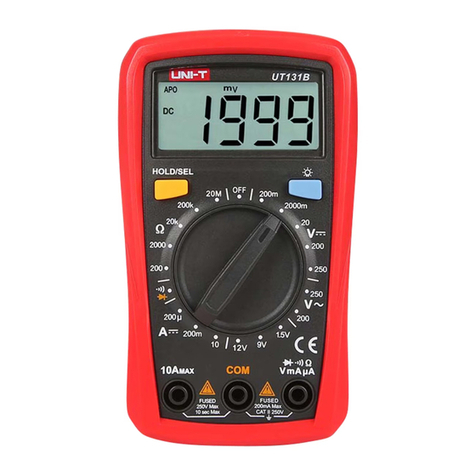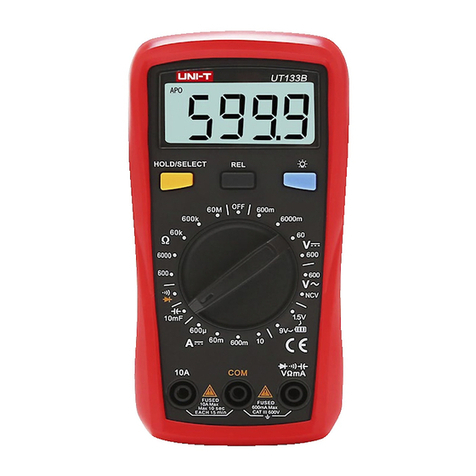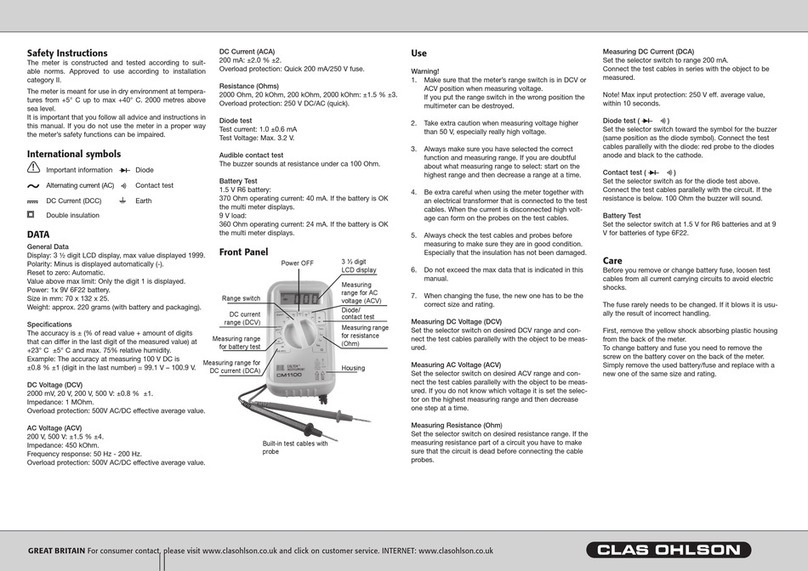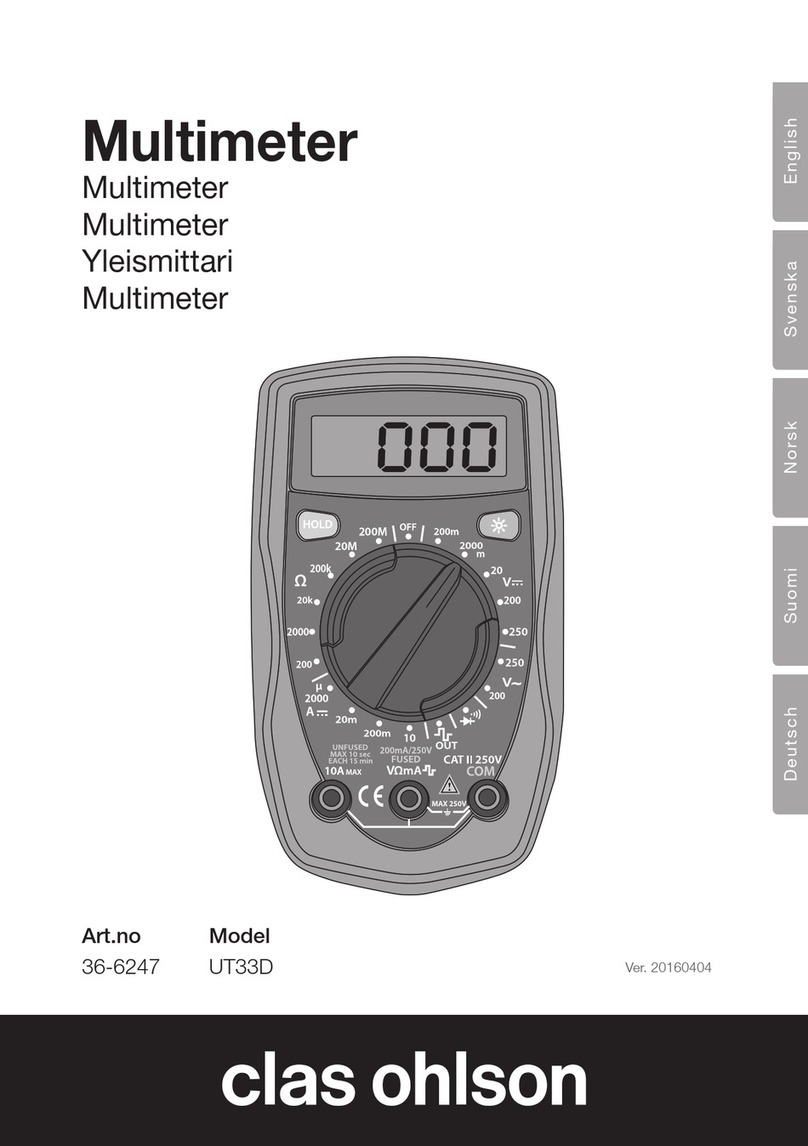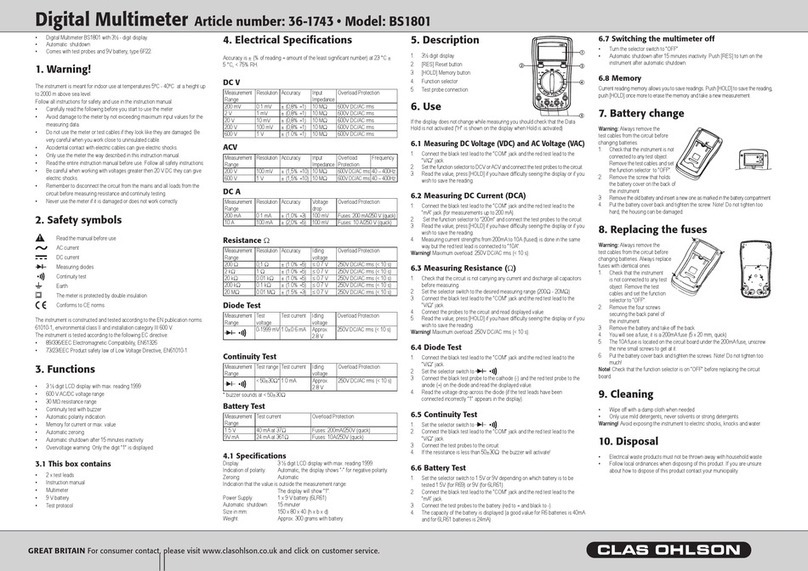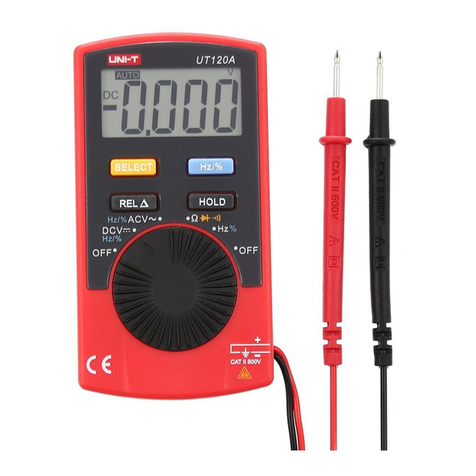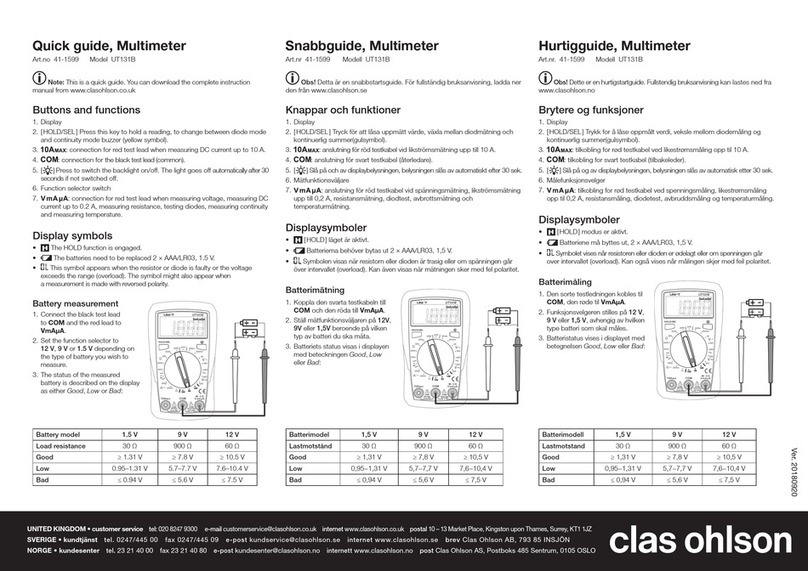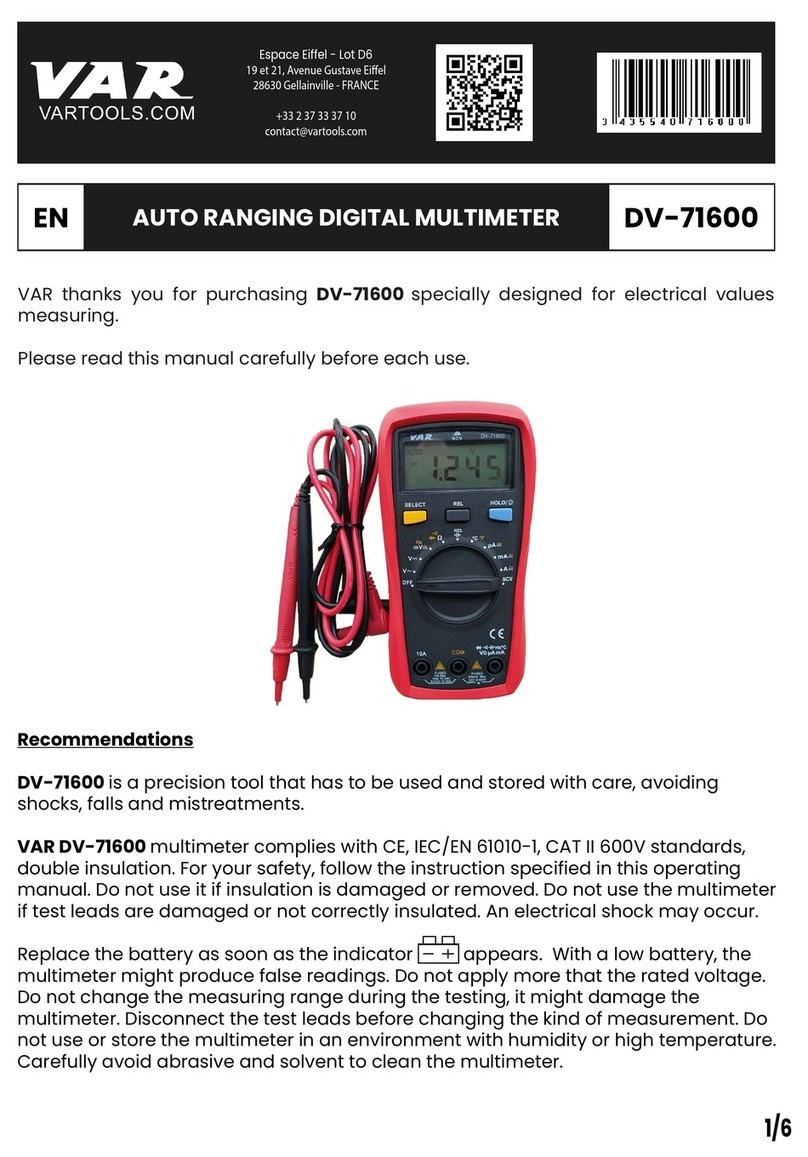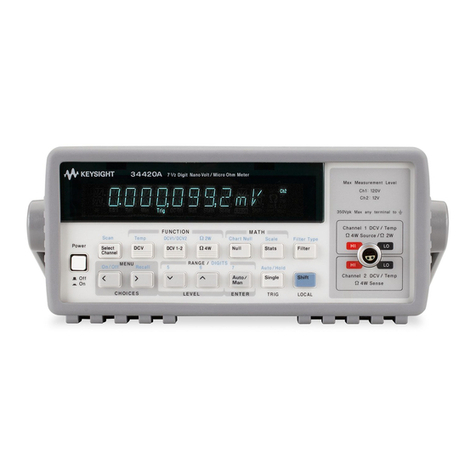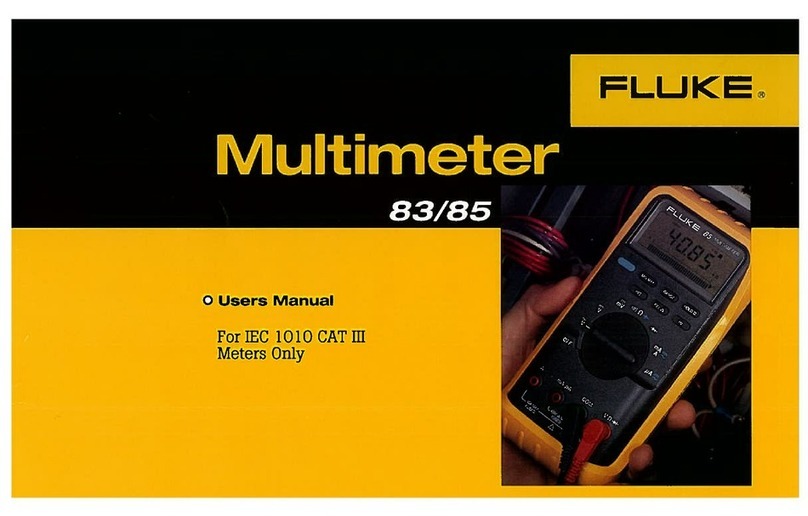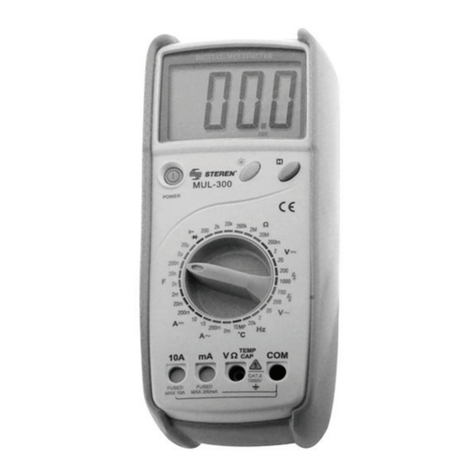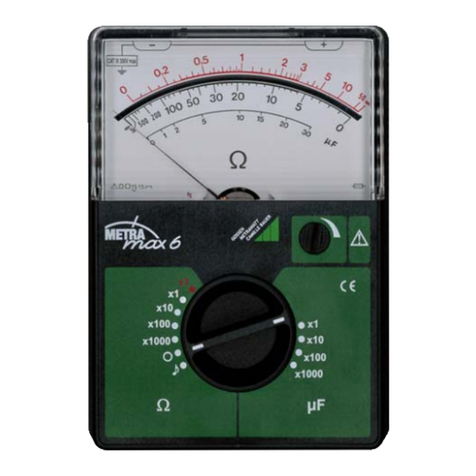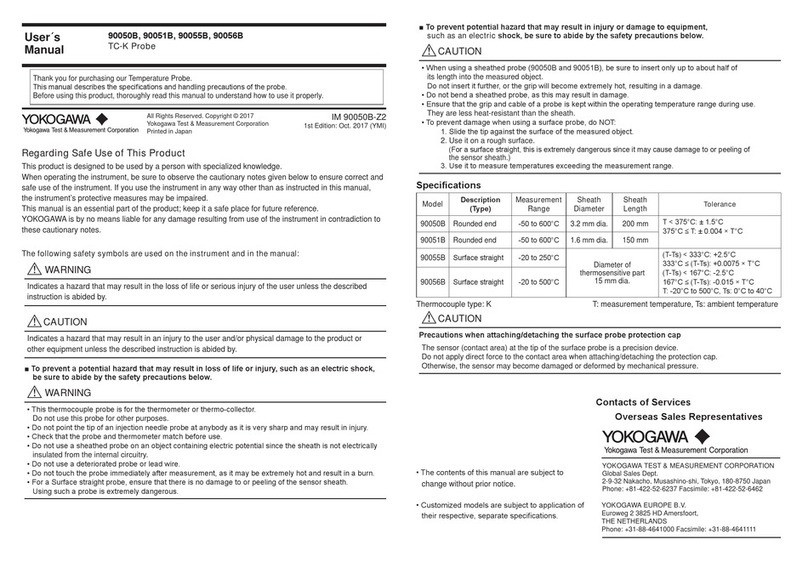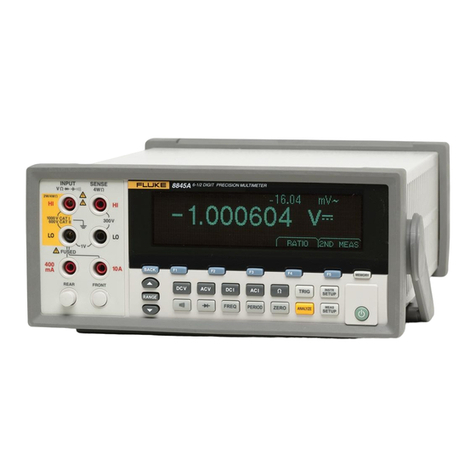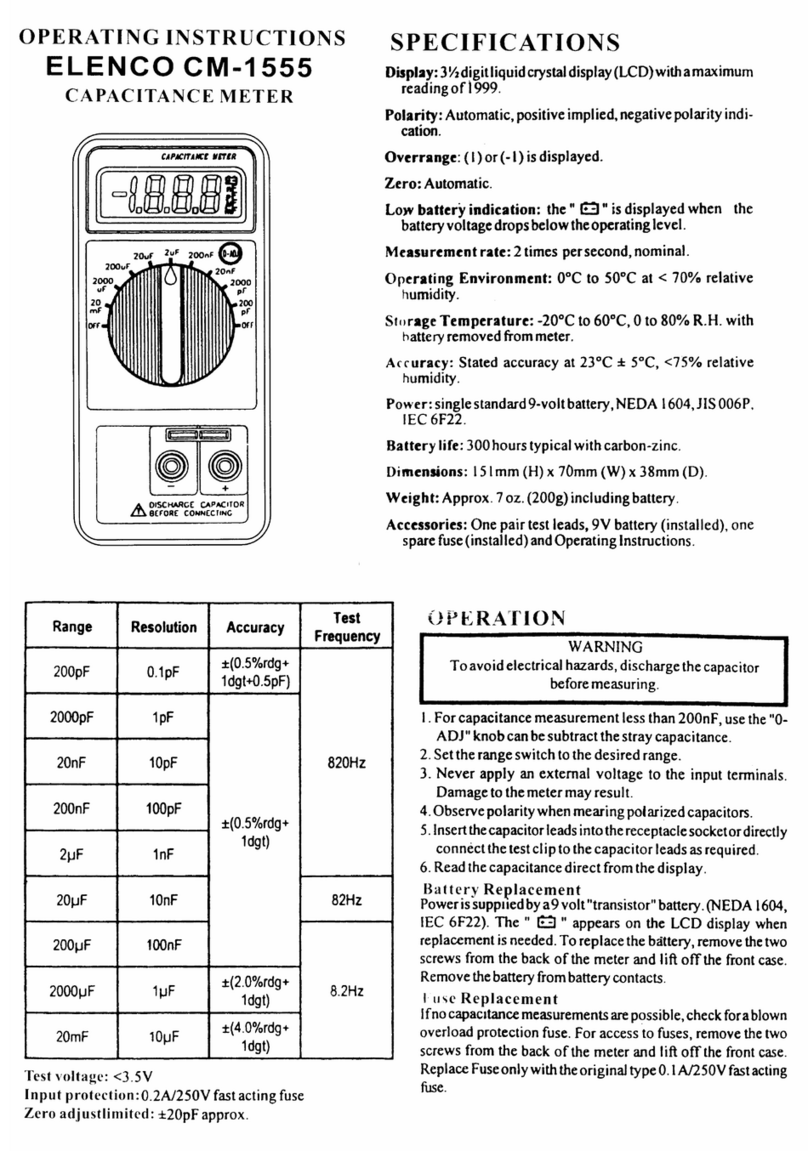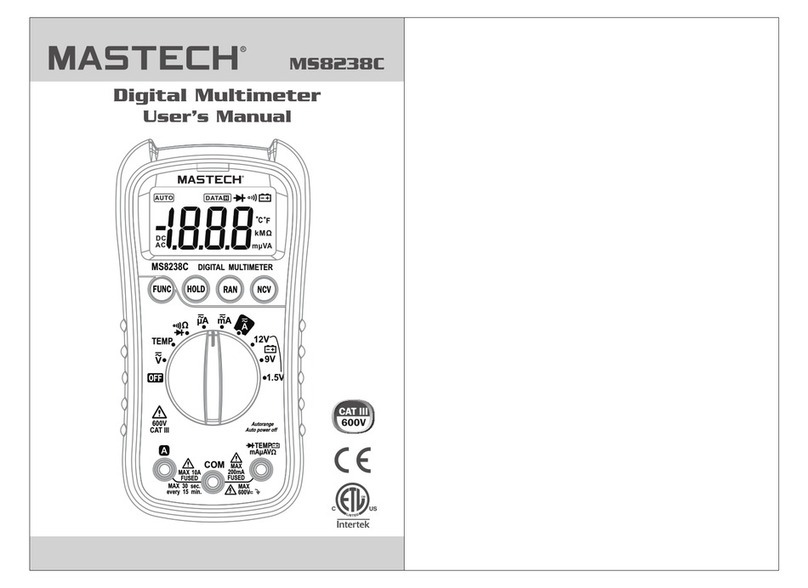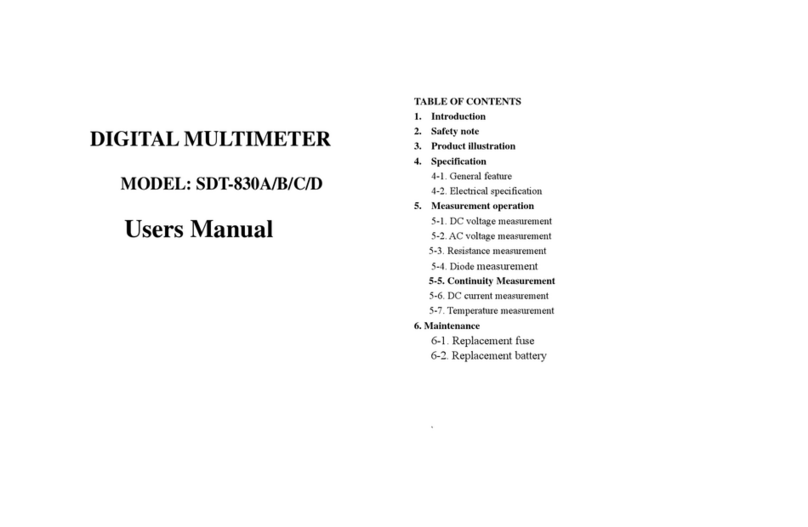
5
English
1. Description
• Advanced TRUE-RMS multimeter with USB and RS232 connectors that let you
save and analyse your readings in your computer.
• Measuring functions: AC, DC, capacitance and frequency measurements,
diodetest and buzzer.
• Automatic shut-off.
• Optical interface for PC connection.
• Rugged, rubber-clad shock-absorbent case.
• Comes with test leads, 9 V battery, USB cable, serial cable and PC software.
• Size: 180×87×47 mm.
2. Safetyinstructions
• The multimeter has been tested in accordance with the EMC Directive 2004/108/EC
and the Low Voltage Directive 2006/95/EG, and fulfils installation category
(overvoltage category) III 1000 V, IV 600 V contamination level 3 in accordance with
EN 61010–1:2010 and EN61010-031:2002/A1:2008.
• This meter is designed for indoor use at working temperatures in therange
of0–40°C.
• Make sure that themeter is used safely by following thesafety instructions and
operating directions written in this instruction manual.
• Do not use this meter if it or thetest leads appear to be damaged, or if you
suspect that themeter might not work properly.
• Make sure that your fingers are behind thefinger guards when using thetestleads.
• Make sure that thepower is turned off before working on thepower circuit.
Evenlow voltages can be dangerous!
• Do not measure voltages higher than 600 VDC or 600 VAC RMS between apower
point and earth connection.
• To avoid shocks you need to be CAREFUL when you work with voltage higher
then 60 VDC or 30 VAC RMS. Voltages higher than this pose arisk of heavy
electric shocks.
• Set theright measuring range using theselector before starting to measure and do
not change therange whilst taking ameasurement.
• Never use themeter if thebattery cover is missing or thebattery compartment
isopen.
• To avoid electric shocks and damage to themeter, do not exceed theoverload
limits. Theguarantee is void if themeter is used incorrectly.
• This meter is protected by fuses, but they will not protect themeter from all kinds
of misuse.
• The meter must not be used in humid, explosive or flammable environments or
close to strong magnetic fields.
• Replace thebattery immediately if thebattery warning symbols appears on thedisplay.
Aweak battery can cause incorrect results and thereby pose asafety hazard.
